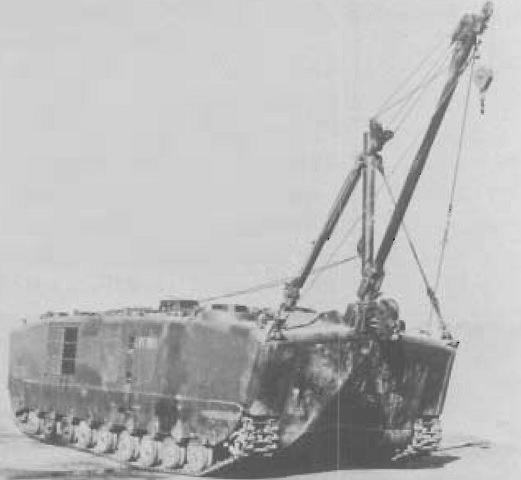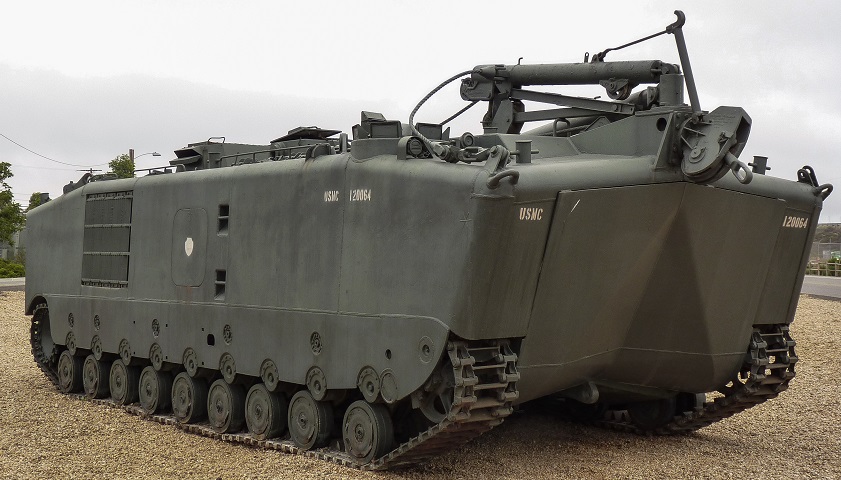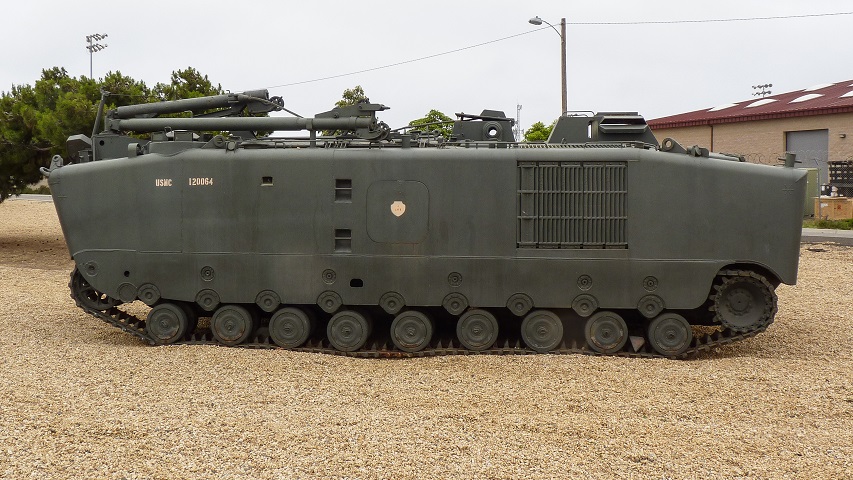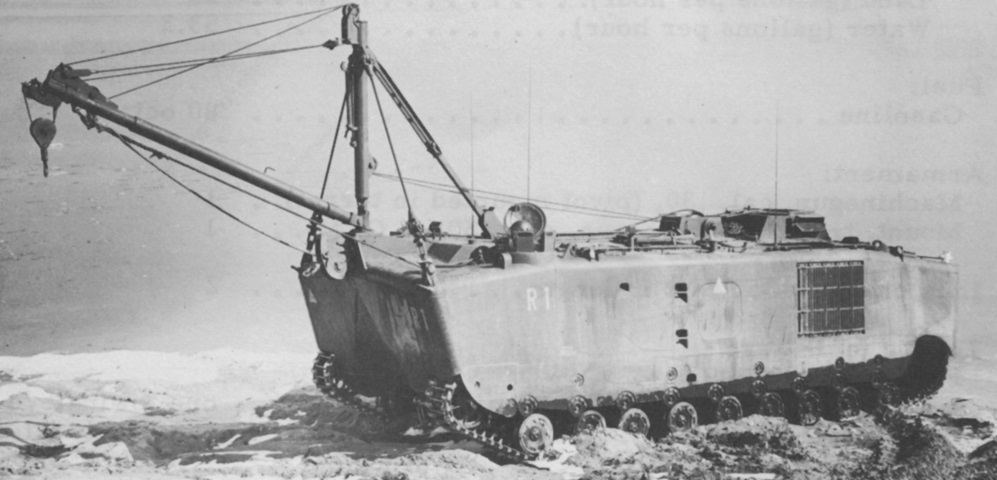
Landing Vehicle, Tracked, Recovery, Mark 1.

The crane boom is erected on this vehicle, and details of the cabling can be seen. (Picture from Research, Investigation and Experimentation in the Field of Amphibian Vehicles.)

Recovery equipment dominates the bow of this LVTR1A1. The bow fairleader is at the very front, and the crane's kingpost is folded down towards the vehicle's rear. The crane operator resided in the cupola over the right track, the periscopes of which can be seen behind the headlight assembly. (Photo by Paul Hannah.)

In contrast to the vehicle in the top image, the large housing for the modified engine air intake and exhaust system is perched on the rear of the vehicle's roof. In front of this is the sliding sheave housing. The long crane boom is stowed towards the left side of the roof. The driver's cupola can be seen on the front of the roof below the crane boom. The large grille to the rear of the hull side shows where the port radiator compartment is located. The light-colored crest is painted onto an escape hatch, and two boarding steps are provided in front of this hatch. The recession in the hull in front of the upper boarding step housed the fire extinguisher pull handle. (Photo by Paul Hannah.)

The crane boom is deployed on this vehicle. (Picture from FMFM 9-2 Amphibian Vehicles.)

Dimensions of the vehicle with the boom stowed and erected are sketched here. (Picture from FMFM 9-2 Amphibian Vehicles.)